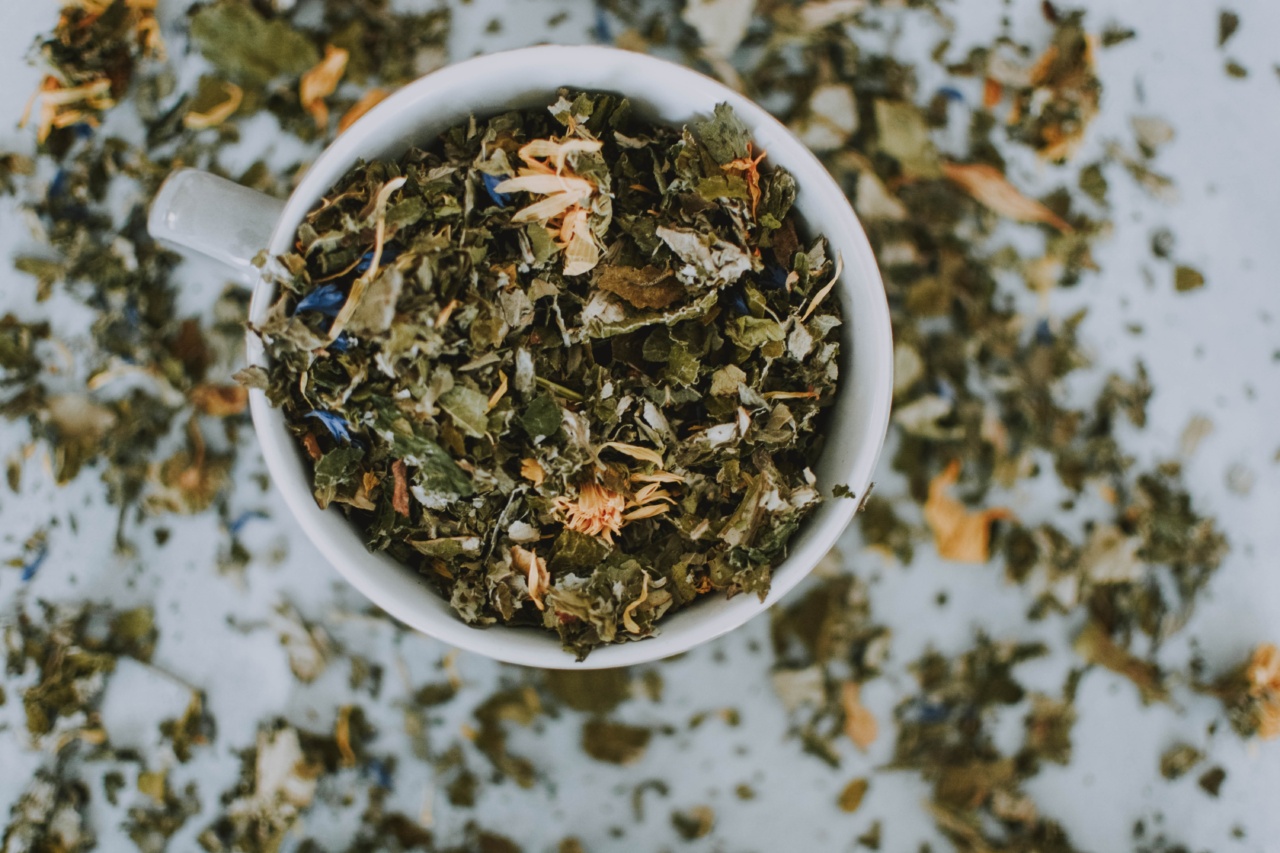Tea is a popular beverage enjoyed by people all over the world. It comes in a variety of colors, each with its own unique taste and aroma.
But did you know that different colored teas also offer specific health benefits? In this article, we will explore the color-coded benefits of tea and how incorporating it into your daily routine can have a positive impact on your well-being.
Green Tea: A Powerhouse of Antioxidants
Green tea is known for its vibrant green color and grassy flavor. It is rich in antioxidants called catechins, which have been linked to numerous health benefits.
These antioxidants help protect the body against damage from harmful free radicals, reducing the risk of chronic diseases such as heart disease and certain types of cancer. Green tea also supports weight management and promotes healthy brain function.
Black Tea: Boosting Heart Health
Black tea, known for its bold, dark color, is a rich source of flavonoids. These compounds have been shown to improve heart health by reducing the risk of heart disease and lowering blood pressure.
Black tea also contains caffeine, which can provide an energy boost and improve mental alertness. Its robust flavor makes it a popular choice for those seeking a full-bodied, strong tea experience.
White Tea: Supporting Skin Health
White tea, with its delicate and light color, is the least processed type of tea and retains the highest level of antioxidants.
These antioxidants help protect the skin against damage from the sun and environmental pollutants, reducing the signs of aging and promoting a more youthful appearance. White tea is also known for its antimicrobial properties, helping to promote a healthy complexion.
Oolong Tea: Enhancing Digestive Health
Oolong tea falls between green and black tea in terms of oxidation levels, resulting in a distinct flavor and color. It has been associated with a wide range of health benefits, including improved digestion.
Oolong tea helps stimulate digestive enzymes, aids in the breakdown of fats, and can alleviate digestive discomfort. Regular consumption of oolong tea may also help with weight management.
Herbal Tea: A Variety of Health Benefits
Herbal teas encompass a wide range of colors and flavors, each offering its own set of health benefits. Chamomile tea, for example, is known for its calming properties and can help with stress reduction and sleep improvement.
Peppermint tea is often used to soothe digestive issues and alleviate symptoms of irritable bowel syndrome (IBS). Hibiscus tea has been associated with lower blood pressure levels. The diverse palette of herbal teas ensures that there is a color and flavor to suit everyone’s needs.
Rooibos Tea: Promoting Overall Wellness
Rooibos tea, sometimes referred to as red tea, is known for its vibrant reddish-brown color. It is caffeine-free and rich in antioxidants, including aspalathin and quercetin.
These antioxidants have anti-inflammatory properties, helping to reduce inflammation throughout the body. Rooibos tea also supports a healthy immune system and aids in the maintenance of good cardiovascular health.
Pu-erh Tea: Aiding in Weight Management
Pu-erh tea, named after the region in China where it is produced, is a fermented tea with a distinctive rich and earthy flavor. It has been shown to aid in weight management by increasing metabolism and reducing the formation of fat cells.
Pu-erh tea is also believed to help regulate cholesterol levels and improve gut health.
Mate Tea: Boosting Energy
Mate tea, derived from the leaves of the Yerba mate plant, is commonly consumed in South America. It has a characteristic greenish-brown color and a robust and slightly bitter taste.
Mate tea contains caffeine and other stimulants that can provide a natural energy boost without the jitters or crash associated with coffee. It also offers an abundance of antioxidants and essential nutrients.
Jasmine Tea: Calming the Mind
Jasmine tea combines the benefits of green or white tea with the delicate fragrance of jasmine flowers. This aromatic blend not only delights the senses but also offers calming properties.
Jasmine tea can help reduce stress and anxiety, promoting relaxation and mental well-being. It is often enjoyed as a soothing bedtime beverage.
Conclusion
Tea, with its array of colors and flavors, provides not only a delightful beverage experience but also a multitude of health benefits.
From green tea’s powerful antioxidants to black tea’s heart-healthy properties, each color-coded tea offers unique advantages. Whether you seek to improve digestion, boost energy, promote skin health, or enhance overall wellness, there is a tea color to suit your needs.
So brew a cup of your favorite colored tea and savor not only its taste but also the well-being it can bring to your life.































